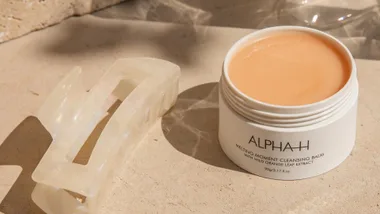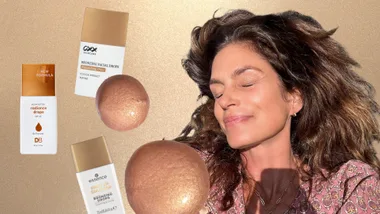During the colder months, without fail, my skin becomes Sahara Desert dry. Fine lines become more obvious, I develop flaky areas and, if the wind picks up, I can look forward to flame red patches around my mouth and chin. If I’m super unlucky, my skin actually becomes sore to the touch and, not surprisingly, my complexion is more flat and dull than fresh and dewy.
At least I can take comfort in the fact that I’m not entirely alone. Indeed, Dr Katherine Armour, consulting dermatologist for L’Oréal Paris, says winter skin that’s dry, red and dull is more common than not.
Why is that exactly?
The main culprit is low humidity and overdoing the steaming hot showers and baths, says Dr Armour. Add to that the fact that a high proportion of us are using chemical laden soaps, bubble baths and foaming cleansers, all of which contribute to skin dryness.
“The weather, the hot water and the products all contribute to skin dryness by stripping the skin of important lipids which seal moisture in,” says Dr Armour.
Factor in cold temperatures complete with icy winds combined with indoor heating and you can start to see why dehydration is so common in winter.
Sure, there are a lucky few whose skin remains supple and hydrated all year round, but they’re few and far between.
The majority of us sufer during winter, at least in dermatological terms anyway. And being young and fabulous doesn’t protect you either.
“Dry skin conditions can afect all ages, all ethnicities and even those with typically normal and normal-to-oily types,” says Dr Angelike Galdi, head chemist and assistant vice-president of research and development for the skincare company Kiehl’s.
For me, that means tight, red skin.
Yet there are several diferent degrees of what would be classified as problem winter skin, says Dr Galdi.
“In the beginning stages, dry skin means fine lines will become more visible,” she says.
“Then skin will feel rough and appear dull and flaky. In the more severe stages, cracked skin can occur. When inflamed, the skin may appear red and swollen.”
Unfortunately, this can be exacerbated by itchiness and the fact that most of us have fingers that are only too willing to scratch. A good scratch may bring relief momentarily, but to state the obvious, it’s not a good idea, says Dr Galdi.
“Repeated rubbing and scratching can produce areas of thickened, rough and damaged skin,” she says. “It can also result in skin dermatitis where skin becomes red and inflamed.”
If that happens, then you’re best of visiting a dermatologist who may prescribe topical cortisone to alleviate the patchiness, dryness and itch. That’s only for the more serious of cases, of course. Generally, you can protect your skin throughout winter by following a reasonably simple skincare routine.
That routine can come in any shape or form depending on your skin type, lifestyle and personal preferences.
One thing it must contain, though, is a quality moisturiser for both day and night. The bottom line? Regular use of a highly efective daily moisturiser packed with humectants is what will get you through winter, says Dr Galdi.
Dr Armour agrees. “Moisturise, moisturise, moisturise,” she says.
To help that quality moisturiser penetrate, try also incorporating a light exfoliation twice weekly, suggests Dr Galdi. This will remove any dry spots and allow effective delivery of your daily moisturiser.
Skip the harsh, fragranced soaps and other cleansing products for face and body, and train yourself to shower in lukewarm rather than piping hot water. Following a not-so-steamy shower or bath, apply a quality moisturiser immediately.
Both Dr Galdi and Dr Armour agree this is when moisturiser will work best.
“Studies have shown that if you apply moisturiser immediately after bathing, it will actually increase the water content of your skin,” says Dr Armour.
While you might opt for a lighter moisturiser in the warmer months, during winter, you’ll need a richer, heavier style of cream – for the face and the body.
If you’re a regular user of products with active ingredients, there’s no need to cut back on these, however.
“Vitamins B3 and C are great for preserving luminosity by attacking brown spots and hyper-pigmentation, no matter what the season,” says Dr Armour.
“Vitamins B3 and B6 also improve the function of the epidermal barrier, which will help prevent further loss of moisture from the skin.”











